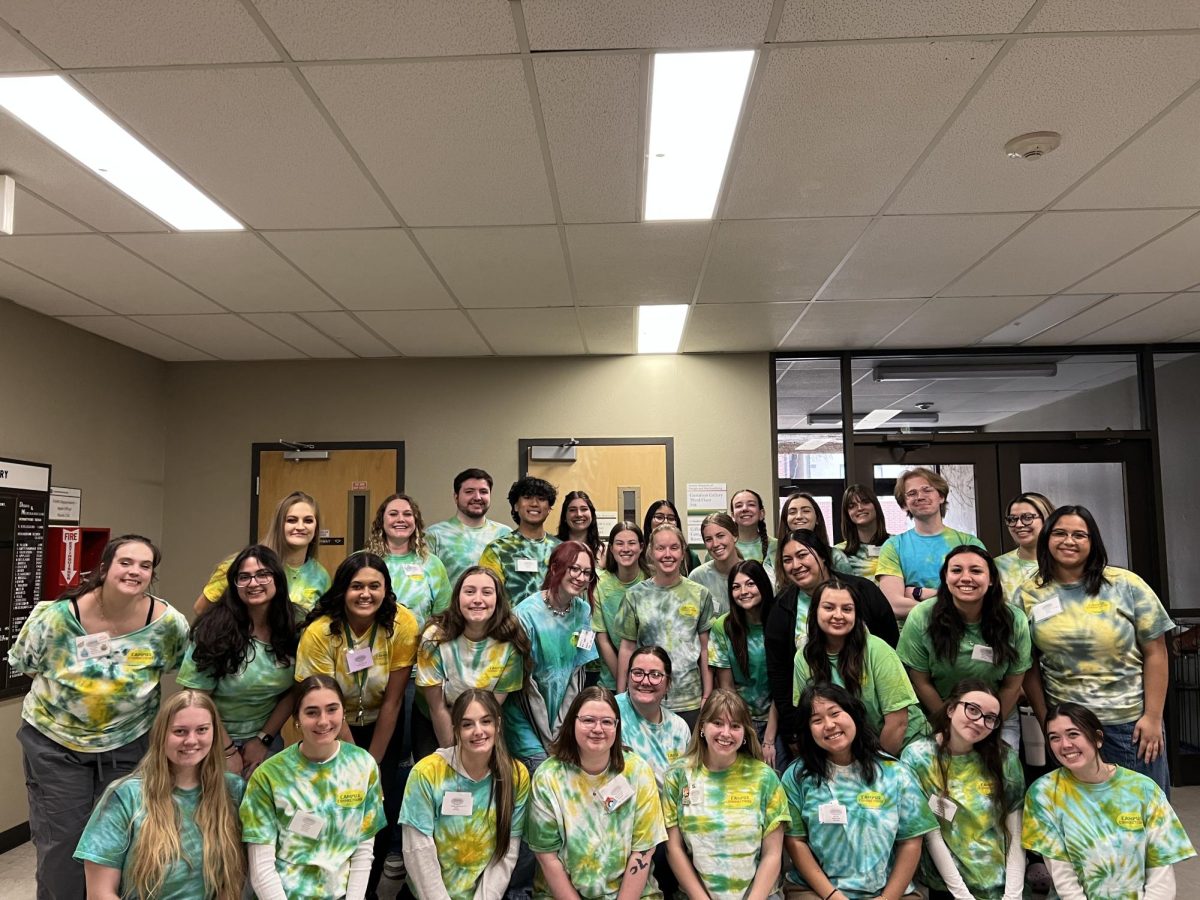Eye movement desensitization and reprocessing therapy has been a widespread practice in recent years for patients experiencing post-traumatic stress disorder and a variety of other psychological disorders and stressors.
“The basic premise of EMDR is this idea that the things that we react to in a big way, the things that trigger us today, usually have roots in the past,” said Dorinna Ruh, a Fort Collins-based licensed clinical social worker certified in EMDR therapy. “And that those roots most likely are some form of a traumatic event or memory or situation.”
“After doing EMDR on my father’s death, not only can I talk about it, I can think about it, I can remember it — it does not have emotional charge.” -Dorinna Ruh, clinical social worker certified in EMDR therapy
Previously called eye movement desensitization, EMDR dates back to 1987, when Francine Shapiro pioneered the practice after experiencing a decrease in negative emotions surrounding her own traumatic memories after use. Shapiro conducted the first research in EMDR therapy and trained other mental health professionals on how to perform it.
Following a similar declaration by the American Psychological Association in 2004, the World Health Organization recognized the effectiveness of EMDR therapy in individual and group therapy settings in 2013.
“I think a lot of people look at EMDR therapy and think, ‘Oh, that’s weird. Oh, it’s a bunch of hooey,'” Ruh said. “But the number of empirical studies proving that EMDR therapy is effective and does cause change — it’s enormous.”
When people think of EMDR therapy, they probably picture a screen with someone’s eyes following a dot moving from the left to the right.
“That eye movement back and forth is what your eyes do naturally when you are in that (rapid eye movement) state of sleep,” said Ann Robinson, a local therapist certified in EMDR therapy.
The REM state of sleep is the stage of the sleeping process during which dreams occur. This eye movement is called bilateral stimulation and encompasses more than just eye movement, such as auditory or tactile bilateral stimulation.
“(EMDR is) founded in neuroscience but can be super helpful and supportive with people who are struggling with distressing feelings and memories,” Robinson said.
The process of EMDR therapy is a lot more complicated than it comes across in popular culture.
“I do a pretty thorough history, and that would probably take several sessions,” Robinson said, describing the process she goes through when using EMDR therapy to treat a client.
Robinson outlined these preliminary sessions as exploring resourcing, which describes mindfulness and visualization techniques to ease the discomfort experienced during EMDR therapy.
“We are building trust that the body and your mind can kind of handle feeling distressed and calming down again,” Robinson said.
Being able to have a safe, comforting visual or technique is essential to returning to equilibrium after undergoing an EMDR therapy session.
The next stage is the reprocessing phases, Ruh said. There are eight steps in the EMDR therapy protocol; the reprocessing stage includes phases three, four, five and six.
“We find a way to get the memory networks lit up,” Ruh said. “We add the eye movements or some sort of bilateral stimulation. And by doing that, the information changes of how it’s stored and the perspective that we have on it.”
“Once we do that (reprocessing), then we work through sort of building someone’s positive beliefs about themselves up and strengthening those,” Robinson said. “And once we have done that, we would consider that target clear.”
EMDR therapy is unique in that no single person will have the same experience in treatment.
“Someone might have five or 10 targets; another person might have more than that,” Robinson said. “It really just depends on what their life has been like up to this point.”
The APA has only recommended EMDR therapy as a treatment for PTSD. However, both Robinson and Ruh are examples of clinicians who see the effectiveness of EMDR therapy reaching into many other anxiety-based disorders.
Many people assume a tragic incident must occur for somebody to experience trauma.
“Trauma comes in many forms, and it can be relational, it can be neglect, it can be like a lack of connected parenting — and then in addition to all the types of abuse and other things that we think about as trauma,” Ruh said.
EMDR therapy also has far-reaching abilities to help with other disorders, not just trauma.
“It is really helpful for people who are experiencing anxiety, people who are experiencing depression, people who have phobias, like fear of flying or fear of driving or something that is impacting their quality of life — a fear that they need to manage,” Robinson said.
While Ruh treats clients using EMDR therapy and trains other therapists, she can also speak from personal experience on the effectiveness of receiving EMDR therapy.
“My father died when I was young — I was 7,” Ruh said. “It was traumatic. … I remember going to a CPR class, and they showed a movie about somebody having a heart attack, and I lost it. Like I just, I left the room crying and got hysterical.”
Ruh had to skip the movie during every CPR training because the emotions were too intense. Because this happened when she was young, she blamed herself for her father’s death, even though she didn’t have any role in it, Ruh said.
“After doing EMDR on my father’s death, not only can I talk about it, I can think about it, I can remember it — it does not have emotional charge,” Ruh said.
However, EMDR therapy is not accessible to everyone. Ruh recommended the EMDR therapy information and self-help book by Shapiro, “Getting Past Your Past,” as an option for working toward healing independently.
For Colorado State University students, faculty or community members looking to start therapy, Robinson suggested continuing the search until finding somebody they feel comfortable and compatible with.
“The most common reason that therapy is effective is the relationship that you have with the therapist, so for someone who thinks they might want to do EMDR, I would be looking for a therapist that you feel like you connect with and you feel like you trust,” Robinson said. “And if they are EMDR trained or EMDR certified, even better, but really finding someone that feels like a good therapeutic home for you is most important.”
Reach Caden Proulx at science@collegian.com or on Twitter @CSUCollegian.










